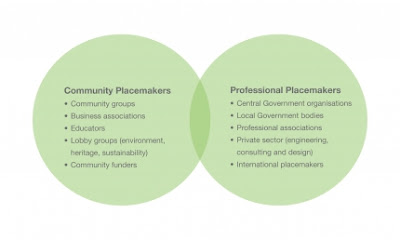Three great public spaces to visit
1. Federation Square
I visited Federation Square in January of this year during the Melbourne Tennis Open. It was such an experience sitting in the square with a couple thousand people watching the final of the men’s tennis on a big screen. The atmosphere and the space made for an incredible night of entertainment. Federation Square is a mixture of open space and attractions in the heart of Melbourne. It works so well due to its size which is an entire city block and incorporates an array of attractions that are symbolic of all that is great about Melbourne, including fine art, hospitality, bold architecture and a vibrant calendar of events.
 |
| Federation Square (Photo courtesy of Google Images). |
 |
| Federation Square (Photo courtesy of Google Images). |
2. Plaza Hidalgo
 |
| Plaza Hidalgo (Photo courtesy of Google Images). |
The plaza acts as a center of thriving activity, yet provides enough activity to act as a buffer from the persistent hustle and bustle that typifies life in Mexico City. There is a high level of local pride, and this public space is populated by both locals and tourists at its busiest times. Making it a must see when in Mexico City.
 |
| Plaza Hidalgo (Photo courtesy of Google Images). |
3. St James Park
Located east of Buckingham Palace in London and has been called a spiritual place which is the best central park in London. This wonderful park has always been considered a respite away from the busy city of London. Again I have not been to this park but have heard many positive things about it. It is spread over 53 acres and has a small lake within its grounds. Many different birds make their home the park including Pelicans which were a gift from the Russian Ambassador in 1664.
It is the oldest of the Royal Parks in London and has an interesting history of private ownership by Henry VIII and had the land drained and turned into a home for exotic animals such as camels, crocodiles and an elephant. Charles II then redesigned the park into a more formal style and opened it to the public. This park appears to be a lovely setting to avoid the hustle and bustle of London and a must see.
These three public spaces are beautiful and unique in their own right and attract visitors from far and wide. The most important aspect of a public space in my belief is the little things such as seating or tidiness or a cool piece of art therefore even the smallest of public spaces can be attractive through the implementation of little bit effective initiatives.
 |
| St James Park (Photo courtesy of Google Images). |
 |
| St James Park (Photo courtesy of Google Images). |














